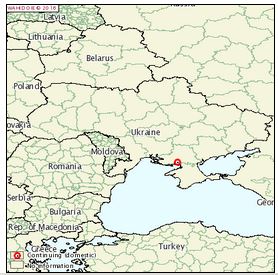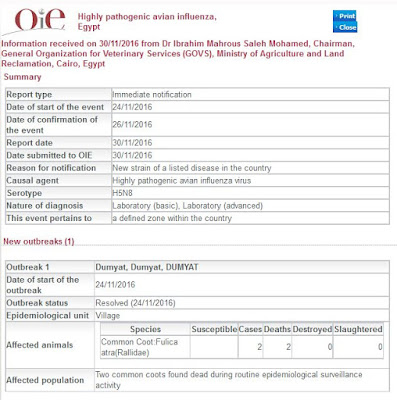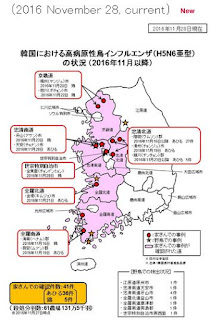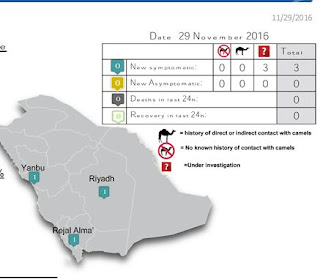#11,954
As the month of November winds down much of Europe, South Korea, and Japan continue to battle the spread of two remarkably robust bird flu viruses (
H5N8 and
H5N6).
Both viruses have evolved genetically since their previous appearances (see Korea: H5N6 A New Reassortant Virus - MAFRA and EID Journal: HPAI A(H5Nx) Viruses With Altered H5 Receptor-Binding Specificity), and both are showing signs of increased host adaptation and/or virulence.
While human infections have not
(yet) been a part of either story, millions of birds have already been culled, and the prospects are for a long winter's fight ahead for poultry interests in both regions.
Meanwhile, we've yet to hear from any of the `usual suspects' that - most years - provide most of our winter flu news.
Despite the legitimate concerns (
and occasional hype) over avian flu,
seasonal flu remains the biggest year-to-year influenza threat, killing tens of thousands of Americans every year, and hundreds of thousands globally.
So far, seasonal influenza activity in the Northern Hemisphere has been low, although media reports out of China suggest increasing activity (see Nov 29th WHO Flu Report below).
This year, H3N2 is expected to predominate, and that often yields a more severe flu season than does H1N1. Seasonal flu often doesn't get started until January, so there is a lot of flu season left ahead.
I get my shot every year, and urge others to consider doing
so as well (see
#NatlPrep: Giving Preparedness A Shot In The Arm).
While the vaccine can’t promise 100% protection, it – along with practicing good flu hygiene (washing hands, covering coughs, & staying home if sick) – remains your best strategy for avoiding the flu and staying healthy this winter.
Absent - at least so far this fall - have been reports of human
H5N1 infections in
Egypt, and we've only seen
1 H5N6 and
2 H7N9 cases reported from
China. These two countries have contributed more than 90% of the novel flu infections reported around the world in recent years and can be expected to produce more this winter.
Both nations reported a decline in human cases last year, although there are serious questions over just how robust their surveillance and reporting really is.
Perhaps the biggest question is where do
HPAI H5 clade 2.3.4.4 viruses turn up next? Both H5N6 and H5N8 have demonstrated a remarkable ability to spread rapidly via migratory birds, and it is still early in avian migration season.
The world's migratory flyways could conceivably funnel either H5N8 or H5N6 into North America, H5N6 could yet turn up in Europe or Southern Asia, and H5N8 could very well make it into West Africa.
Scenarios we looked at three weeks ago the in the
FAO On HPAI H5's 4th Intercontinental Wave, which examined the rapid expansion of H5N8 in eastern Europe and warned
that other areas could see encroachment of the virus as well. The
FAO specifically mentioned:
Places at Risk:
Countries in the Middle East;
Countries in the EU;
West Africa;
Countries in the former Soviet Union;
Countries in South Asia.
While making predictions about influenza is always ill-advised, given that it isn't even December yet, and we are already deluged in bird flu reports, it is fair to say there is a lot more ahead.
Stay tuned.









 =
= 















